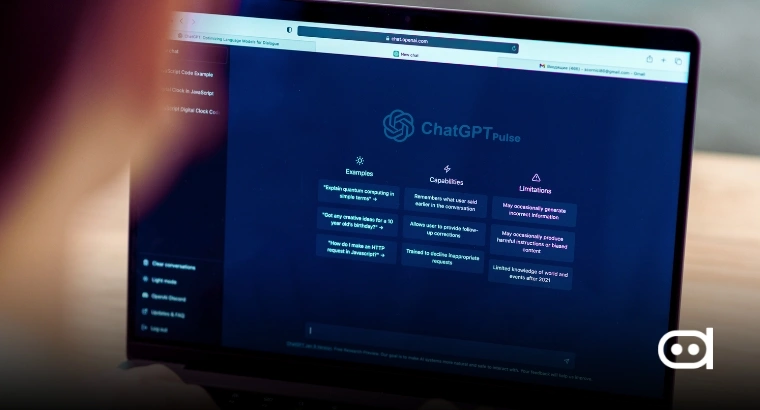
AI technologies, particularly large language models, have transformed various industries such as content production and customer support, but have also increased risk. The emergence of PROMPTFLUX malware marks a new and alarming area of cybercrime, where artificial intelligence is not merely used as a tool to commit the crime but is an active participant in the entire process.
In contrast to conventional malware that has a predetermined behavior, PROMPTFLUX alters its own source code in real-time through prompts sent to a live LLM, changing its source code to avoid detection. This is a sign that the traditional cybersecurity measures might not be enough to deal with the new breed of AI-powered malware.
What Is PROMPTFLUX?
In 2025, the Google Threat Intelligence Group (GTIG) discovered an experimental dropper malware called PROMPTFLUX. As per their findings, the malware employs Visual Basic Script (VBScript) and makes extensive use of Google’s Gemini LLM API for requesting obfuscation and evasive code changes.
The main difference between PROMPTFLUX and traditional malware is that it includes a “Thinking Robot” which continuously interacts with Gemini through machine-understandable requests, prompting it to produce new, obfuscated code that will take the place of the original one.
While still experimental, this self-mutating behavior marks a clear evolution in how LLM-based threats could operate. Google says the code cycles through versions to hide from static signature-based antivirus tools, and then the rewritten version is placed in the victim’s startup folder for persistence.
How PROMPTFLUX Works – Inside the AI-Driven Attack Chain
Here is an overview of the attack flow of PROMPTFLUX:
- Initial Infection: A VBScript dropper gets installed on a target computer, usually by hiding it or delivering it through social engineering.
- Thinking Robot Activation: Malware accesses a Gemini API using an embedded API key and sends requests like, “give me obfuscated VBScript code that will pass antivirus.”
- Code Regeneration: Gemini gives back a new, obfuscated version of the malware source code. Then, PROMPTFLUX writes this regenerated code to its own VBScript file.
- Persistence & Spread: The altered script is placed in the Windows Startup folder so it will execute on boot. The infected machine also copies the malware to USB drives or network shares as a way of propagation.
- Evasion: By continually altering its code, PROMPTFLUX makes it very challenging for signature-based detection since the code does not resemble each other at all.
The Role of Prompt Engineering in Malware Evolution
Prompt engineering has usually been perceived as a developer tool, crafting inputs to coax LLMs into desired outputs. In contrast, PROMPTFLUX shows that the same technique can be weaponized.
This dual-use dilemma is very worrisome. The very features that make LLM tools so effective in boosting productivity can be turned around by the attackers to their advantage, creating smarter and less detectable threats.
LLM Vulnerabilities That Enable PROMPTFLUX
There are several weaknesses present in the current models of LLM architectures and their usage that make malware like PROMPTFLUX possible:
- Prompt Injection: Malicious users try to deceive the LLMs with their inputs and get them to carry out actions not intended by the developers.
- Model Poisoning/ Misuse: LLMs can be misused persistently through hard-coded API keys and malicious prompts.
- Self-modifying Code: LLMs are used by malware to create new versions of its source, which helps it get past static analysis.
- Data Leakage Risks: LLM responses may be recorded or extracted, thus revealing the internal prompts or infrastructure.
Defending Against AI-Powered Malware
A multi-layered strategy is necessary to mitigate the threat of PROMPTFLUX and similar attacks:
- API Key Protection: Keep your LLM API credentials safe and watch for any unusual usage patterns.
- Behavior-Based Detection: Rely less on static signatures and more on anomaly detection of runtime behavior, especially just-in-time self-modification.
- Prompt-Security Practices: Validate and sanitize any dynamic prompt inputs that come from untrusted sources.
- Least-Privilege Execution: Execute scripts and AI agents with only the necessary rights.
- Incident Response Playbooks: Anticipate AI-powered malware by preparing response plans that cover LLM compromise scenarios.
- Red Teaming & Pen Testing: Create scenarios in your environment where LLM-enabled attacks occur so you can assess your detection and response capabilities.
The Future of AI and Malware – What Lies Ahead
Even though PROMPTFLUX is experimental, it can still serve as a harbinger of the future threats that can emerge in the cyber world. Besides being used only for the previous few listed scenarios, the new families of AI-powered malware might also be able to:
- Adapt in real time via LLM queries
- Use multi-agent systems to coordinate evolution
- Leverage other generative models (not just code) to evade heuristics
Defenders will need to respond with AI-assisted cybersecurity, combining human expertise and machine learning to spot threats early. At the same time, global cooperation and stronger regulatory frameworks will be essential to limit the misuse of LLM APIs and enforce responsible AI deployment.
Also Read : https://www.timesofai.com/industry-insights/ai-prompts-for-gpt-5-and-grok-4/
FAQs
What makes PROMPTFLUX different from traditional malware?
Unlike traditional malware, which has fixed payloads, PROMPTFLUX queries an LLM (Gemini) continuously during its runtime to regenerate and obfuscate its own code, thus making it extremely adaptive and difficult to detect.
Can AI models be trained to detect their own misuse?
Yes, defensive models can keep an eye on techniques such as strange prompt patterns, unusual API usage, or self-modifying behavior. However, this would need prompt validation focused on security and proactive design.
How can businesses prepare for AI-driven threats?
Organizations should secure LLM credentials, adopt behavior-based monitoring, conduct simulations of threats, and invest in prompt security measures to thwart the more sophisticated AI-prompt injection attacks.














